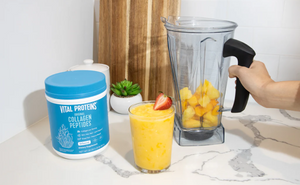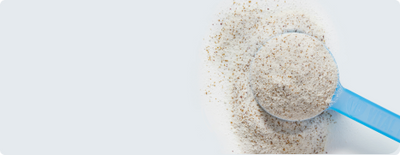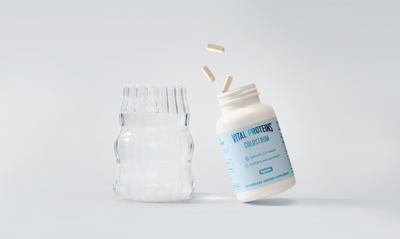With us sitting more than ever – during Zoom calls, catching lunch breaks on the couch and binging shows to curb boredom – our bodies are in need of a good stretch.
And let's be real: The benefits far outweigh any laziness stopping you from getting it done. "Stretching has an abundance of benefits, including preventing injury, minimizing muscle soreness, improving physical performance and increasing blood flow to muscles," says Jessica Mazzucco, an N.Y.C.-based certified fitness trainer and Founder of The Glute Recruit.
Check out the stretching routines from the fitness experts below. You'll find everything from a morning stretch to a post-workout stretch that can help with soreness.
Vital Note: This article has been made available for informational and educational purposes only. It is not intended to be a substitute for professional medical advice, diagnosis, or treatment. Always seek the advice of your physician or another qualified health provider with any questions you may have regarding a medical condition. Your licensed healthcare professional can best provide you with the diagnosis and treatment of any medical condition and assist you as well in deciding whether a dietary supplement will be a helpful addition to your regimen.

1. Beginner stretching routine
Who says you have to be a flexible yogi to stretch? Your only daily form of stretching could be reaching for the remote and you'd still be able to complete this routine, provided by Mazzucco.
Tricep stretch
Lift your arm up and bend the elbow. Grab your bent elbow with your other hand, reach towards your upper back and position your elbow towards the sky. You should feel a stretch in your tricep while doing this stretch.
Half kneeling hip flexor stretch
Start in a half kneeling position (think: a proposal) so that your left leg is in front and your right leg is behind you. Ensure that the right leg/hip is at 90-degrees and the left knee is over the left toes. Push your body weight forward into the front leg and hold that position for about 20-30 seconds. Don't forget to do both sides!
Wall calf stretch
Face a wall and place both hands on the wall so that they are at eye level. Keep your right leg forward and take a step back with the left leg. Bend both knees while keeping both hips on the floor. Hold this stretch for about 20-30 seconds.
Sitting hamstring stretch
Sit on the floor with your right knee bent with the sole of your foot resting against your left thigh. Reach toward your ankle and hold anywhere from 10-60 seconds. Then switch legs and repeat.
Seated glute stretch
Sit on the ground with your back straight. Lift your right leg and place your right ankle on your left knee. Make sure your left leg is straight out and slightly lean forward to intensify the stretch. Hold for 10-30 seconds and switch legs.

2. Morning stretching routine
Skip the sun salutations and try this energizing routine by Robert Herbst, 19-time World Champion Powerlifter and weight loss and wellness expert. It's the perfect way to start your day after a night of resting (read: binging Superstore).
He recommends implementing a breathing element into the mix. "As you do the stretches, breath calmly in and out through your nose, expanding your belly, not your chest," he explains. "This routine will help you get limber, relaxed and centered for the day ahead."
Lying leg pull-up
Lying on your back on your bed, bend your left leg and bring it up to your chin, pulling it up gently with your hands. Hold it for 5-10 seconds as you feel a stretch. Then repeat with the right leg.
Lying hamstring stretch
Keeping your left leg straight, raise it until it is vertical at a right angle to your body. Hold it with your hands for 5-10 seconds while you feel a stretch to the hamstrings on the back of your leg. Repeat with your right leg.
Lying twist
Still lying on your back, bring your left leg across your body at waist level, twisting your lower body at the waist. Hold your leg with your right hand for 5-10 seconds while you feel a stretch in your lower back. Then repeat with your right leg, holding it with your left hand.

3. Post-workout stretching routine
Stretching after a workout is a no-brainer: "Stretchingloosens up tight muscles by increasing blood flow to the muscles," says Jeff Parke, Owner of Top Fitness Magazine. "It also increases flexibility and decreases the risk of injury."
So whether you rode it out on your Peloton, hit leg day pretty hard or crushed an upper body workout, this next routine by Caitlin Sacasas, ACE certified personal trainer at Rebel Heart Fitness, can help. You can even use it if you've been sitting at your desk all day!
Reclined piriformis stretch (also called pigeon or figure-4 pose)
"This helps get deep into the glute medius and piriformis, two muscles that get super tight after a workout," says Sacasas.
Lie flat on your back with bent knees. Cross your right leg, just above your ankle, over your left knee. Open up your hip by engaging your glute and pushing your right knee away from your body, foot flexed. Now, reach through to grab onto your left thigh, calf, or pant leg and pull your left leg back toward your chest, keeping your lower back flat on the floor. Hold here for 30 seconds to 1 minute, and then repeat on the other side.
Standing side body stretch
Stand with your feet hip-distance apart, tailbone tucked under. Think of lengthening your spine up toward the ceiling as you stretch your arms up overhead. Grab onto your left wrist with your right hand. Lean over to the right, pushing your hips toward the left. Keep the length in your spine and your arms straight as you feel a tension-releasing stretch in your left side body and lat muscles. Hold here for 5 breaths, then switch sides.

4. Bedtime stretching routine
Sick of counting sheep to fall asleep? Fix that by pairing this routine Parke with Vital Proteins® Sleep Collagen Shot™ (made with 7g of collagen, melatonin, magnesium and GABA).
He recommends combining these stretches with slow, mindful, deep breathing: "Deep, purposeful breathing allows your body to release all the tension you may be holding mentally and physically."
Supine twist
In a supine position, bring one leg up and over to the other side of your body. As you exhale, image you are wringing out any tension held in your spine and back (hold each side for 30 seconds).
"The seated supine twist will aid the body with good digestion and increase spinal mobility," says Parke. "Any twisting motion is going to help tone the abdominals, gently massage your organs, and lessen discomfort in the lower back."
Sphinx pose
Lie on your belly with your legs extended behind you. Bring your arms up so you're resting on your elbows and lift your head and chest off the floor with your shoulder blades back. Draw your chin up as you breathe.
"The sphinx pose lengthens your abdominal wall and allows for myofascial release in that area as well," says Parke. "As an added benefit, the sphinx pose opens your chest and shoulders as well as bending again, in an opposite direction from your daily posture."

5. Stretching routine for runners
"Stretching makes a drastic impact in your run!" says Keith Hodges, Founder of Mind In Muscle Coaching in Los Angeles. "In just 10 minutes prior to a run, stretching the calves, quadriceps, hamstrings and low back will influence your stride length."
His routine starts with the feet up to the chin for a reason: "Because we wear shoes every day, we often neglect strengthening our feet."
Rolling out the feet
Start by applying pressure to the balls of your foot. Begin by rolling the arches of the foot. Transition to heels. Repeat for 1 minute or as needed. Note: You can use a lacrosse ball, baseball or softball.
Standing soleus stretch
"Soleus is one of the two muscles that make up the calves and is responsible for propelling us forward (plantar flexion) while running and walking and bears the bulk of the load while running," Hodges tellsLively.
Standing in front of a wall or leaning on an object, place one leg in front of the other. Keeping both heels firmly in the ground, drive your front knee over your toes. Shift forward and backwards increasing your range of motion with every repetition. Hold and repeat for 1 minute or as needed.
Standing gastrocnemius stretch
Standing in front of a wall or leaning on an object, place one leg in front of the other. Keeping the back as straight as possible, with the heel firmly in the ground, drive your hips forward while keeping the heel anchored into the ground. Shift forward and backwards finding more range of motion each repetition. Repeat for 1 minute or as needed.
Half kneeling quadriceps stretch
"Quadriceps (made up of four muscles) are primarily responsible for knee extension and hip flexion," says Hodges.
Take a knee in front of a wall or an object to help you balance. Reaching back, grab your right ankle/foot with your right hand. Maintain this position as you drive your hips forward to increase the stretch. Be sure to contract your glute to engage the hip flexors as well. Repeat for 1 minute or as needed.
Standing toe touch
Stand with both feet together and knees slightly bent. Hinge (bend) at the hips, keeping the back from rounding. Drive the hips backwards to reach for more depth with the fingers going towards the toes. Stand up slowly and repeat. Repeat for 1 minute or as needed.













